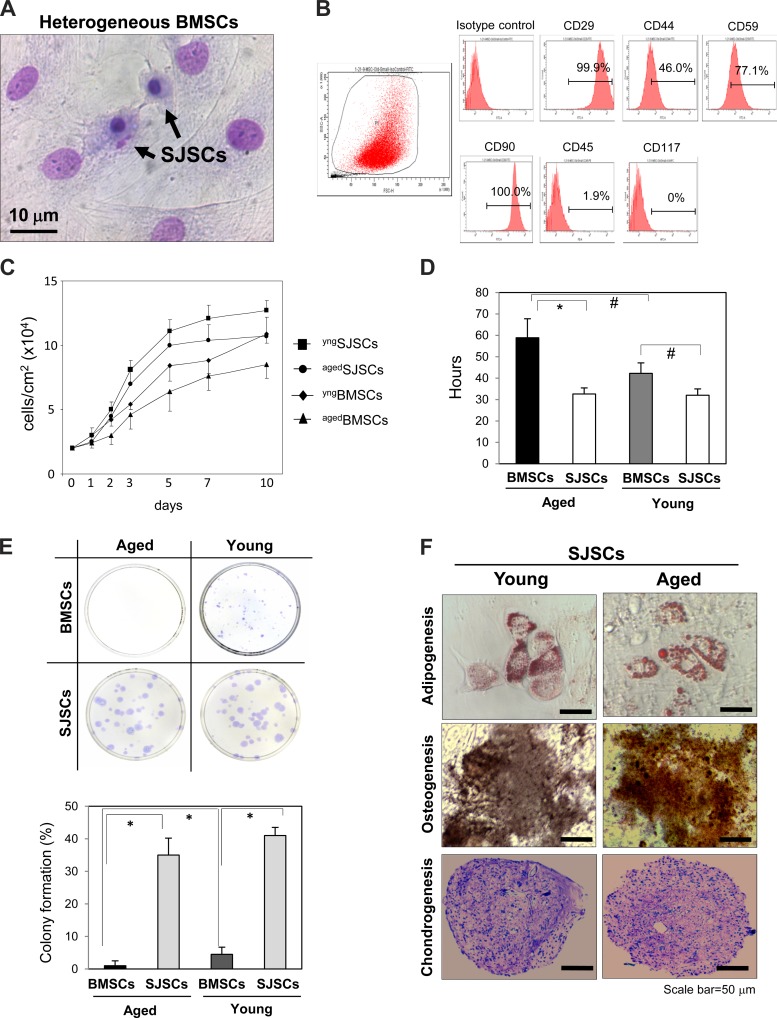Fig. 1.
Identification of small juvenile stem cells (SJSCs) from heterogeneous bone marrow-derived stem cells (BMSCs) and their potential for proliferation and differentiation in vitro. A: representative image of a heterogeneous BMSC culture, which contains both large cells and small cells (Giemsa staining). Heterogeneous BMSCs were filtered with 3-μm pores to isolate small cells. B: profile of cell surface markers on aged SJSCs (agedSJSCs) and young SJSCs (yngSJSCs). Both aged and young SJSCs were positive for CD29, CD44, CD59, and CD90 but negative for CD45 and CD117. C: cell growth curves showing that the cell proliferation rate was higher in SJSCs than in BMSCs. agedBMSCs, aged BMSCs; yngBMSCs, young BMSCs. D: SJSCs showed a shorter doubling time measured at 1–3 days compared with BMSCs. There was almost no difference in the doubling time between aged SJSCs and young SJSCs, whereas the doubling time of aged BMSCs was significantly longer than that of young BMSCs. *P < 0.01; #P < 0.05. E, top: representative images of microscopic colonies obtained from aged BMSCs, young BMSCs, aged SJSCs, and young SJSCs. Bottom, clonogenicity was markedly higher in SJSCs compared with BMSCs. *P < 0.01. F: differentiation potential of aged SJSCs was as high as young SJSCs for osteogenic (von Kossa staining), chondrogenic (toluidine blue O staining), and adipogenic (oil red O staining) phenotypes.

